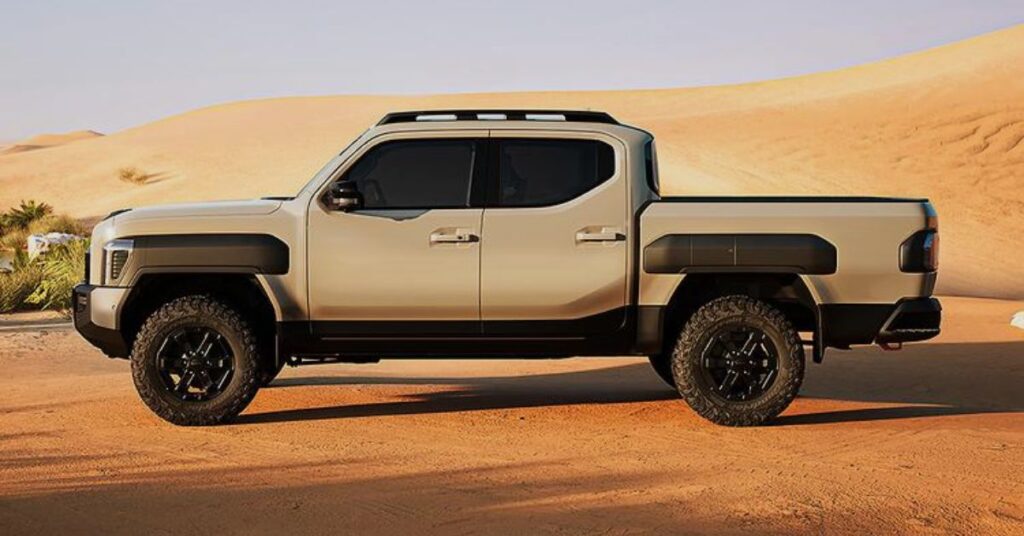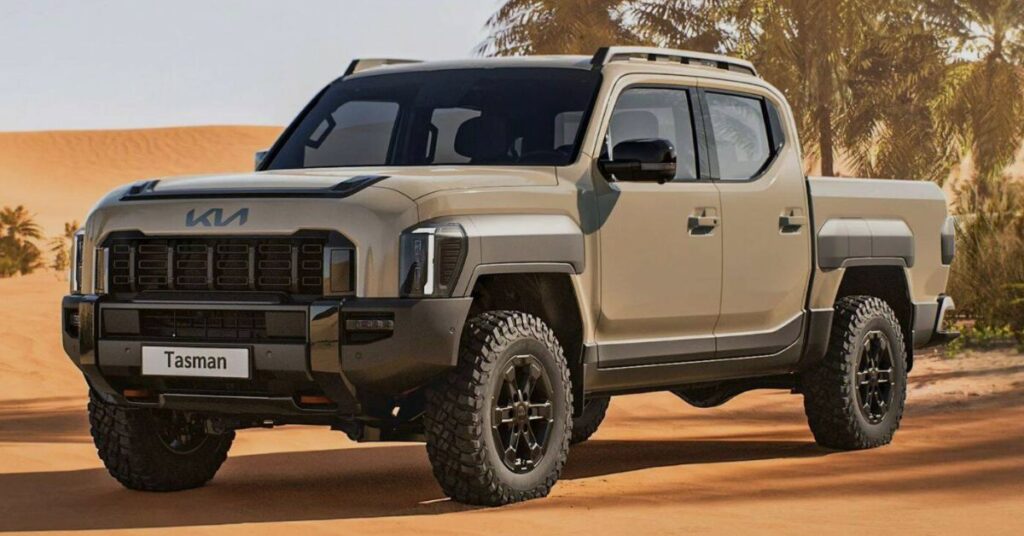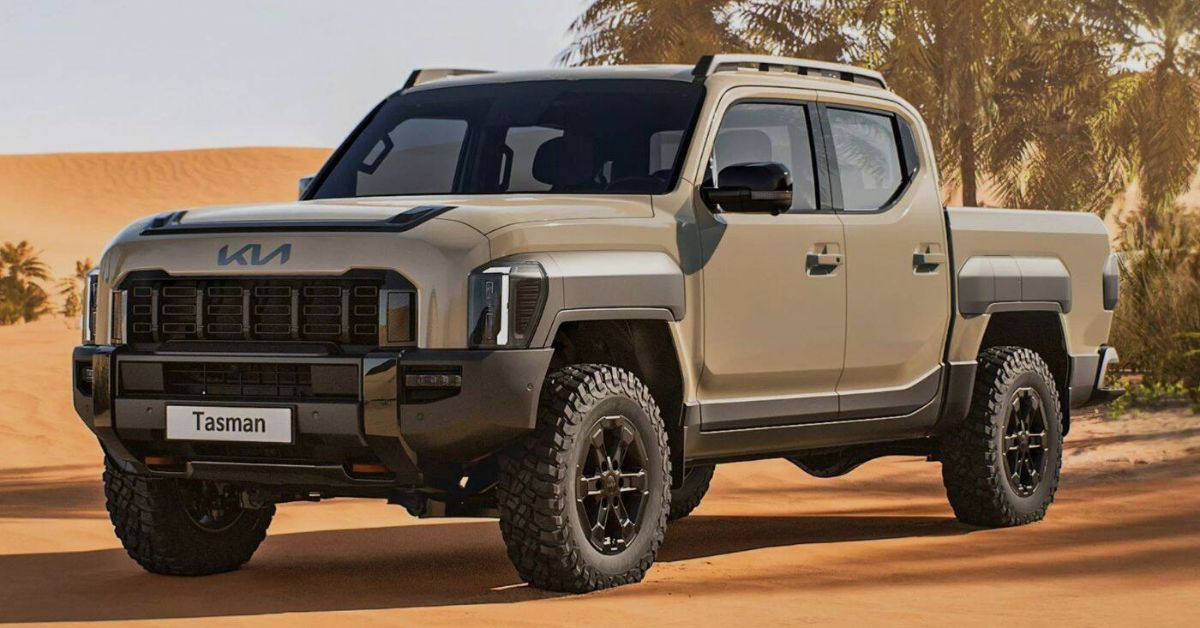The 2025 Kia Tasman marks a bold entry into the highly competitive midsize ute market, positioning itself against well-established rivals such as the Toyota Hilux, Ford Ranger, and Isuzu D-Max. Designed to deliver a balanced mix of performance, technology, and utility, the Tasman is Kia’s first-ever pickup truck aimed at both lifestyle buyers and commercial users. Built with input from Australian engineers and tested under rugged conditions, the Tasman is engineered for global relevance with a focus on reliability, versatility, and innovation.
Powerful Turbo-Diesel Performance
The 2025 Kia Tasman debuts with a 2.2-liter four-cylinder turbo-diesel engine, producing 154 kW (206 hp) and 441 Nm of torque. This powertrain is paired with a 6-speed manual or 8-speed automatic transmission, catering to a wide range of driver preferences.
The turbo-diesel unit offers ample torque for towing and off-road applications, while maintaining fuel efficiency suitable for daily commuting. The Tasman delivers a braked towing capacity of 3,500 kg, matching segment benchmarks set by competitors like the Ford Ranger and Toyota HiLux.
Future variants, including hybrid and all-electric models, are expected to expand the lineup as Kia aims to align with global sustainability goals and evolving customer demands.

Refined Interior with SUV-Like Comfort
The Tasman’s cabin reflects a modern, SUV-inspired interior design, offering premium comfort for both work and leisure. Highlights include:
- Dual 12.3-inch digital displays for the instrument cluster and infotainment
- A 5-inch climate control screen
- Ventilated and heated leather seats
- Ambient lighting and customizable interior themes
- Sustainable materials such as recycled PET fabric
The spacious double-cab configuration ensures comfort for five passengers, with thoughtful additions like under-seat storage and a folding console table that enhances practicality during long trips or job-site use.
Advanced Safety and Driver Assistance Technology
Safety is a core focus for the 2025 Tasman, featuring Kia’s Drive Wise suite of driver assistance technologies. These include:
- Autonomous Emergency Braking (AEB)
- Lane Keeping Assist
- Blind-Spot Collision-Avoidance Assist
- Highway Driving Assist 2 (HDA2)
- Remote Smart Parking Assist
These systems collectively enhance situational awareness, prevent potential collisions, and support semi-autonomous driving in specific conditions. The Tasman is expected to earn high ratings in ANCAP and Euro NCAP crash safety tests upon official release.
Built for Off-Road and Worksite Versatility
Kia engineered the Tasman to handle a variety of terrains and challenging environments. Key mechanical features include:
- Double-wishbone front suspension
- Live rear axle with leaf springs for load-bearing capability
- Selectable 4WD modes, including Sand, Mud, Snow, and Rock (X-Pro trim)
- All-terrain tires and off-road skid plates on select variants
Testing was conducted extensively across Australia’s outback, coastal tracks, and urban settings, ensuring the Tasman delivers optimal handling and durability in real-world conditions.

Practical Load Space and Utility Features
The rear bed of the Tasman is designed with utility in mind. It offers a durable liner, integrated cargo lighting, and multiple tie-down points. The tailgate supports heavy loads and opens with ease, while optional accessories such as sports bars, tonneau covers, and roof racks expand usability for trade work, recreation, and overlanding.
With a payload capacity of approximately 1,000 kg, the Tasman caters effectively to both fleet operators and private owners needing a capable workhorse.
Connectivity and Infotainment
In addition to safety and comfort, the Tasman incorporates a robust infotainment system with:
- Apple CarPlay and Android Auto support
- Wireless charging
- Over-the-air software updates
- Integrated navigation with real-time traffic updates
Kia’s connected services allow for remote diagnostics, vehicle tracking, and maintenance scheduling through a dedicated mobile app, enhancing ownership convenience and peace of mind.
Trim Levels and Expected Pricing
The Tasman is expected to launch in several trims, including:
- Base Workhorse Model – Targeted at fleet buyers with essential features
- Mid-Tier Lifestyle Model – Balanced offering for family and business use
- X-Line and X-Pro Trims – Off-road-focused variants with additional ground clearance, 4WD enhancements, and rugged aesthetics
Although official pricing for global markets is pending, reports suggest a starting price of approximately AUD 45,000 in Australia, with higher-end variants reaching AUD 70,000+, depending on configuration and options.

Global Market Launch and Availability
The 2025 Kia Tasman will first launch in Australia and New Zealand, where demand for durable and versatile utes is high. Additional markets in South Africa, the Middle East, and potentially parts of Europe and Latin America are expected to follow. North American availability remains uncertain, although market interest in compact and midsize trucks could influence Kia’s future plans.
Production will occur at Kia’s factory in South Korea, with regional variants tailored to meet local regulatory and market demands.
Environmental Considerations
Kia has integrated sustainability elements into the Tasman’s design, using eco-friendly materials in the cabin and planning electrified variants in the near future. These efforts are in line with Kia’s global objective to become a carbon-neutral automaker by 2045, part of the brand’s larger “Plan S” strategy.
Conclusion
The 2025 Kia Tasman sets a high standard for new entrants in the midsize pickup truck category. By combining advanced technology, rugged capability, and SUV-like comfort, it presents a compelling alternative to long-dominant models in the segment. With strong performance, robust safety features, and attention to environmental impact, the Tasman is positioned to meet the evolving demands of drivers around the world.
As Kia expands its product portfolio, the Tasman showcases the brand’s ambition to compete in diverse segments while upholding quality, innovation, and value.
